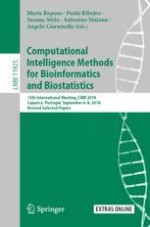2020 | OriginalPaper | Buchkapitel
Inhibition of Primed Ebola Virus Glycoprotein by Peptide Compound Conjugated to HIV-1 Tat Peptide Through a Virtual Screening Approach
verfasst von : Ahmad Husein Alkaff, Mutiara Saragih, Mochammad Arfin Fardiansyah Nasution, Usman Sumo Friend Tambunan
Erschienen in: Computational Intelligence Methods for Bioinformatics and Biostatistics
Aktivieren Sie unsere intelligente Suche, um passende Fachinhalte oder Patente zu finden.
Wählen Sie Textabschnitte aus um mit Künstlicher Intelligenz passenden Patente zu finden. powered by
Markieren Sie Textabschnitte, um KI-gestützt weitere passende Inhalte zu finden. powered by
